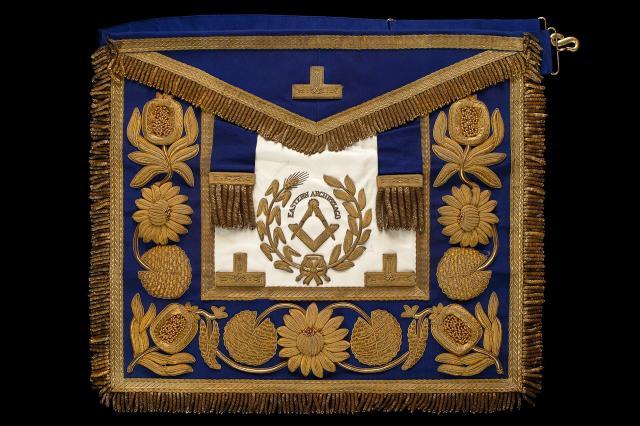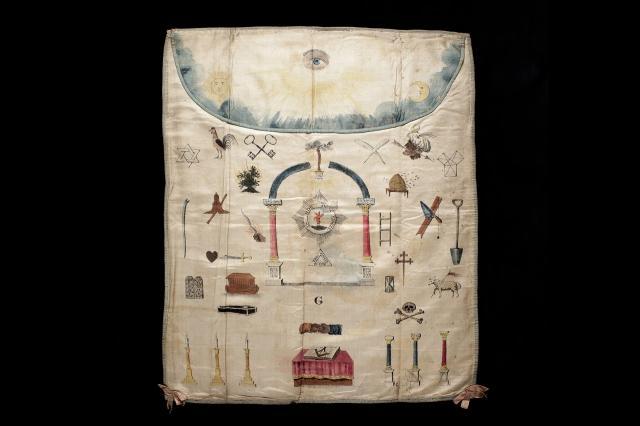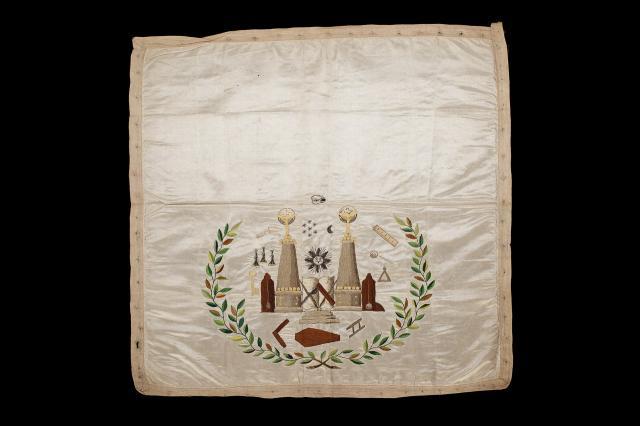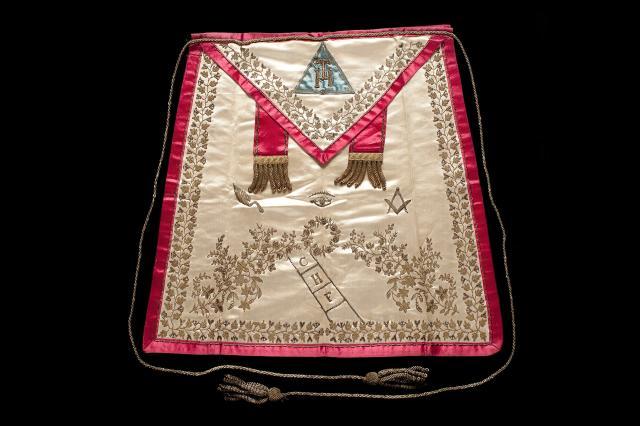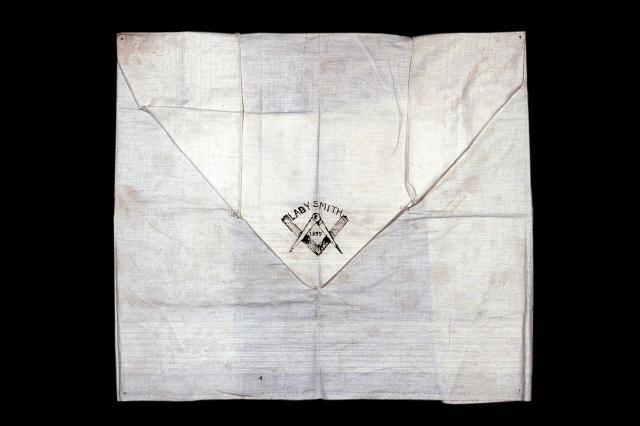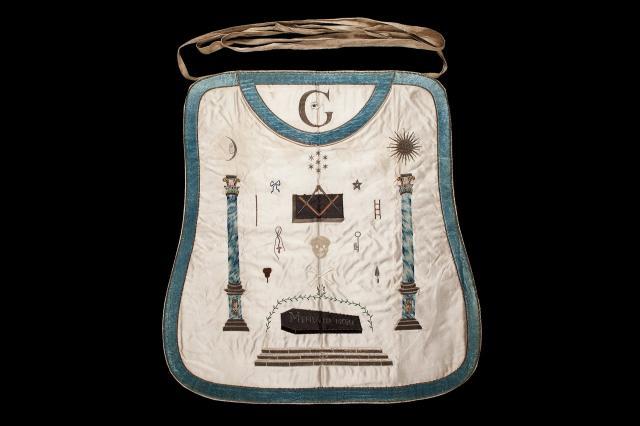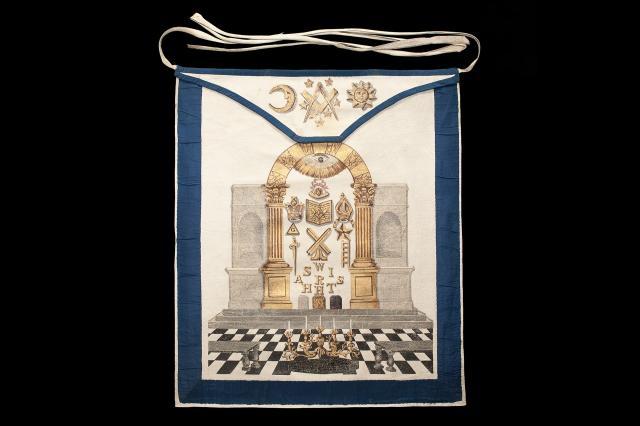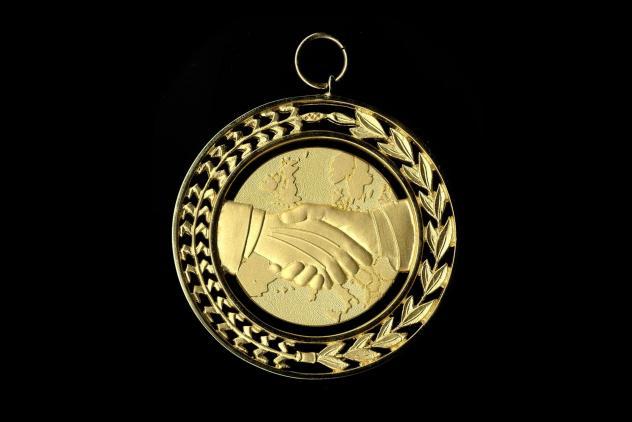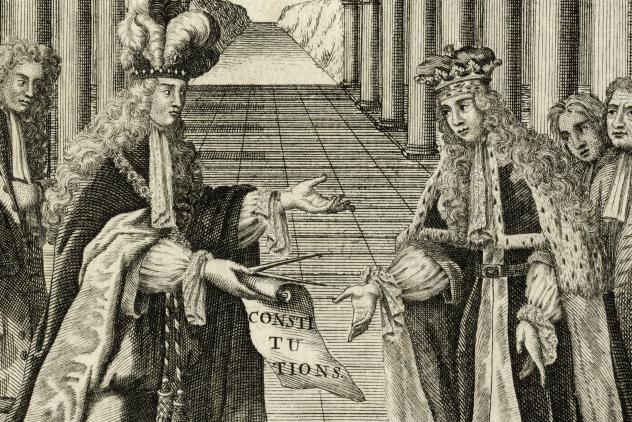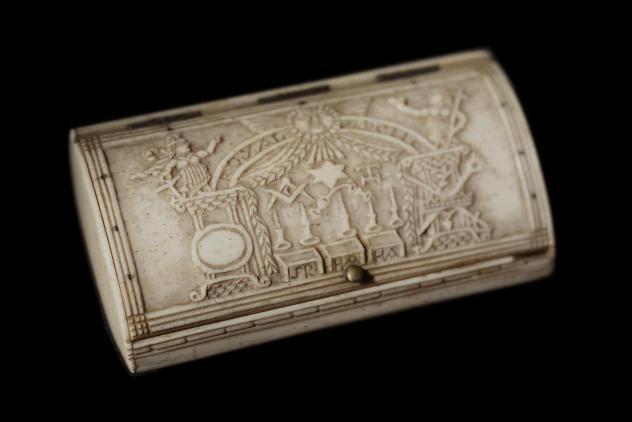Freemasons wear aprons in memory of the stonemasons that created the castles and cathedrals of the past. Often decorated with symbols and designs that carry significance, the apron is a symbol itself and plays an important role in freemasonry.
The traditional apron of a stonemason protected them against flying chips of stone. They were large and made of heavy leather, but for modern freemasons the apron is purely ceremonial and a place to show how far you are progressing on your journey in the organisation.
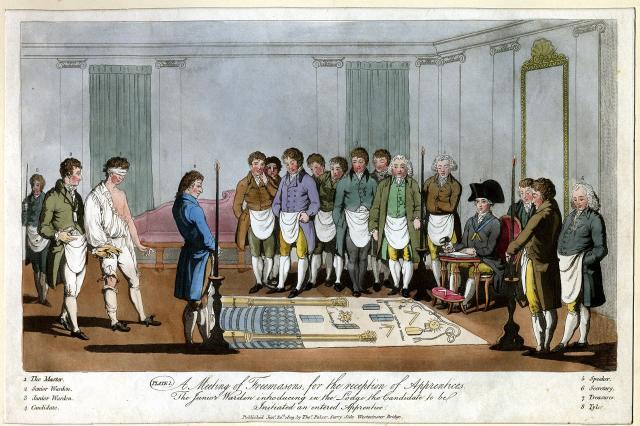
When you join you’re called an ‘Entered Apprentice’ and your first apron is plain white lambskin. As you go through the rest of the three ‘degree’ ceremonies decoration is added in light blue and silver. If you become more senior later on the colours change to dark blue and gold.
Freemasons have worn aprons for all their three hundred years (maybe longer) and it is a link to their traditional roots and shared community. Every member takes part in the three degrees and wears those first three patterns of apron. Even if you gain a senior role later there are no exceptions. Everyone starts at the beginning and works their way up.
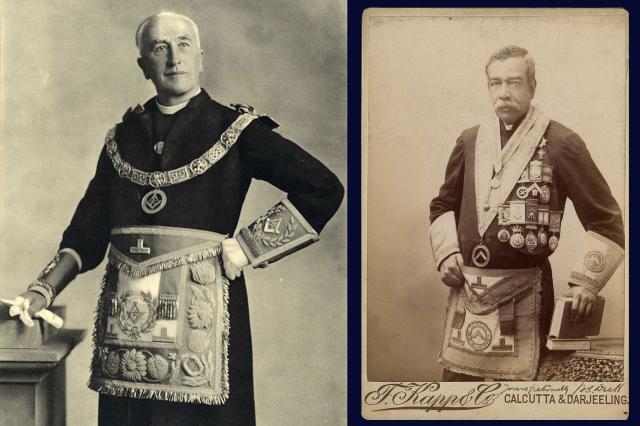
In the early days freemasons would use their apron as a way to express themselves, and we have many wonderful examples in our collection with fine printing, drawing, painting and stitching. Eventually, the design was standardised to create a more equal atmosphere throughout the membership. Today, if you are a vegan, you can use a vinyl apron instead of leather.
See how many different examples you can find in our collection. What are your favourites?
